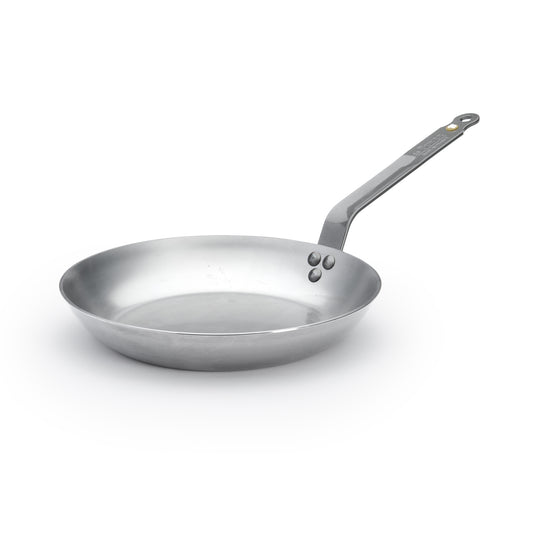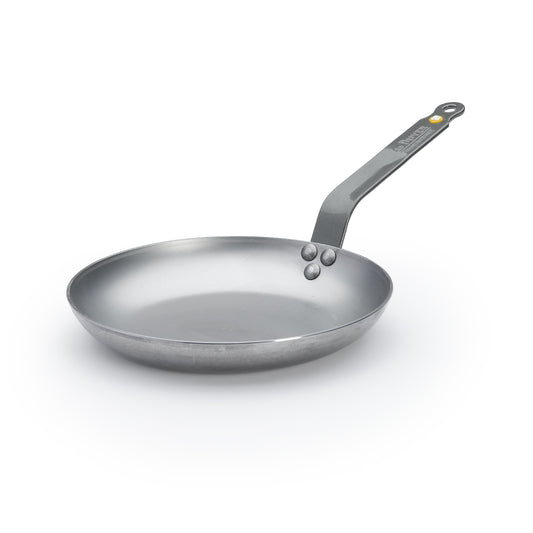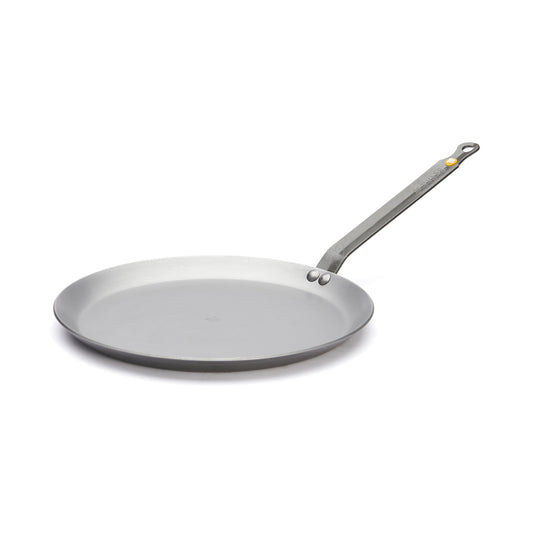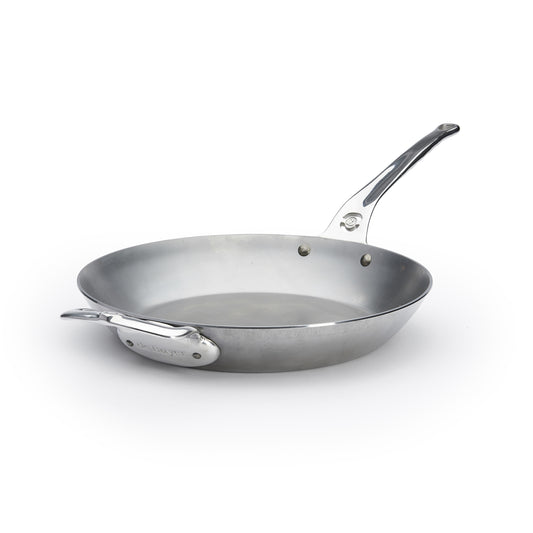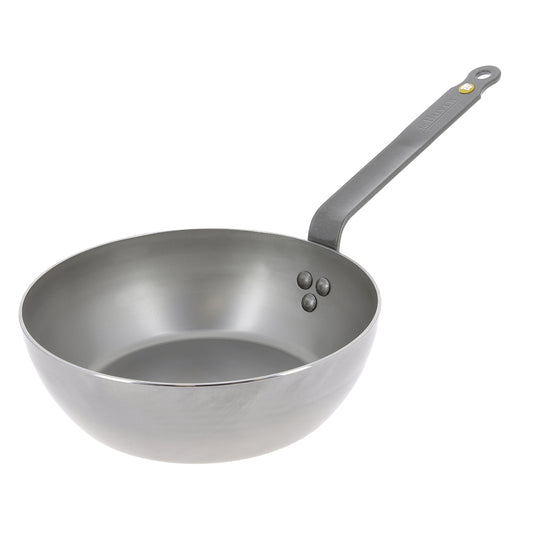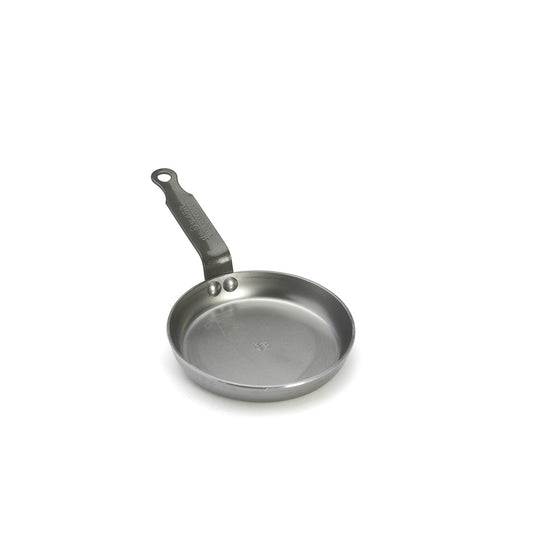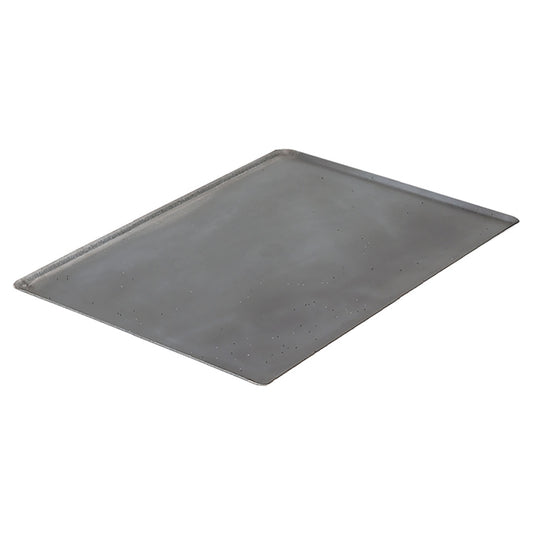Everything You Need to Know About Saucepans
Discover the guide to choosing, using, and maintaining the perfect saucepan. Learn about different materials and how to find the right saucepan for you.
de Buyer

Some pieces of cookware are a must for any chef. A saucepan is one such key item that's needed in every home and professional kitchen.
This article will cover everything from what a saucepan is, its uses, key features, and how to choose the right one for your cooking needs.
What is a Saucepan?
A saucepan is a type of pot that can come in all different sizes and materials but typically has the same general features. These pans come with a round bottom, straight sides, a long handle, and a lid. Some of these saucepans can transition from stovetop to oven cooking seamlessly.
The common size of a saucepan is around one to three quarts, and these pans are mostly used to heat sauces and soups and to boil small amounts of liquid. However, they can be used easily for many other cooking tasks.
For example, using a saucepan to create a roux or thicken a gravy is common. These pans can be used to make rice and other grains. Any dish that can benefit from steaming and can be contained in a smaller space will be ideally prepared in a saucepan.
Top Types of Saucepans
The cooking process is essentially the same regardless of the saucepan material; however, each type of saucepan has slightly different pros and cons when it comes to cooking and maintenance.
Stainless Steel
These saucepans are strong, durable, and corrosion-resistant. The smooth, non-reactive surface is superior for cooking a wide range of foods and involves minimal maintenance. It's compatible with all heat sources, including induction, and capable of withstanding high oven temperatures.
Explore the AFFINITY 5-ply Stainless Steel Saucepan and the ALCHIMY 3-ply Stainless Steel Saucepan for more information.
Copper
No other material beats the exceptional heat conductivity and quick responsiveness of copper saucepans. Copper saucepans are oven-safe and work on a variety of stovetops. This material requires proper care to maintain its look and is slightly reactive, but for many, copper cookware is a lifelong investment that’s well worth the higher price.
Explore the INOCUIVRE TRADITION Saucepan and the PRIMA MATERA Copper Saucepan for more information.
Nonstick Saucepans
These saucepans are incredibly easy to clean and well-suited for cooking delicate items with minimal oil. Nonstick saucepans are more easily chipped than other materials and require care when scrubbing. Most are not oven-safe.
Enamel-Coated Cast Iron
Offers heat retention and is ideal for slow cooking or sauces that require long simmering. The enamel coating is less prone to sticking, making cast iron easy to clean. However, cast iron may be slower to heat up and inefficient at quick cooking. For example, these pans take longer to come to a boil.
Key Features to Look for in a Good Saucepan
A good saucepan can come with different compatibilities and materials. The trick is to choose the best saucepan for your particular needs and kitchen setup. Here's what you should keep in mind:
- Material: Think about how the material impacts cooking performance, i.e., heat distribution, durability, and reactivity with foods. For example, you shouldn’t cook tomatoes in a copper saucepan.
- Handle and Lid: Look for an ergonomic handle for easy use and a tight-fitting lid to help maintain heat.
- Capacity: 1-3 quarts is ideal for most everyday tasks, but you may prefer bigger if you’re commonly cooking for a larger group of people or vice versa.
- Compatibility with Heat Sources: Some saucepans are suitable for induction, gas, electric stovetops, or a combination. Check the fine print before purchase.
Some chefs look for dishwasher-safe pans, but this feature isn't necessary. While throwing your saucepan in the dishwasher is convenient, it may decrease the longevity of your cookware.
How to Properly Use and Care for Your Saucepan
The key to long-lasting, functional cookware is proper care. Below are some practical tips on using and maintaining a saucepan.
- Proper Heat Settings: Use low to medium-high heat as much as possible to prevent damage to the surface. Do not put the saucepan under high heat with nothing in it, as this could damage the pan.
- Cleaning: Handwash all materials as much as possible and make sure to avoid scratching enameled cast iron or nonstick with metal scrubbers.
- Avoiding Common Mistakes: Don’t leave hot saucepans on a hot stove unattended. Refrain from cooking acid ingredients in copper pans. Avoid stacking your cookware collection on top of each other with no protective buffer.
Popular Dishes to Cook with a Saucepan
Saucepans can be used to cook sides and mains, as well as reheat and steam. From sauces, soups, stews, grains, custards, and more, the saucepan is a multi-functional pan perfect for creating both simple and complex dishes. Here are two popular dishes that are perfect for cooking in a saucepan.
How to Cook Gravy in a Saucepan
- Prepare the Roux: Melt butter or warm oil in a saucepan over medium heat. Stir in flour, whisking until it forms a smooth, golden paste. Cook for 1-2 minutes.
- Add Liquid Gradually: Slowly pour in stock or drippings, whisking constantly to prevent lumps. Stir as the mixture thickens.
- Season to Taste: Add salt, pepper, and optional seasonings. Adjust flavors as needed.
- Simmer and Thicken: Let the gravy simmer for a few minutes, stirring frequently, until it reaches your desired consistency.
- Strain and Serve: For extra smoothness, strain the gravy.
How to Cook Quinoa in a Saucepan
- Rinse the Quinoa: Rinse 1 cup of quinoa under cold water in a fine-mesh sieve to remove bitterness.
- Boil the Water: In a saucepan, bring 2 cups of water or broth to a boil.
- Add the Quinoa: Stir in the rinsed quinoa, reduce heat to low, and cover the saucepan with a lid.
- Simmer: Let it cook for 15 minutes or until the quinoa absorbs all the liquid.
-
Fluff and Serve: Remove from heat, let it sit for 5 minutes, then fluff with a fork.
Find the Perfect Saucepan for Your Kitchen
A saucepan is a necessary and extremely helpful cookware item. Before purchasing, consider your specific cooking needs. To elevate your cooking experience, explore de Buyer's superior range of saucepans.
Check out the de Buyer cookware collection and be prepared with the right tool for every dish.
Learn More
Recommended for You
-
MINERAL B PRO Carbon Steel Fry Pan
Regular price $90.00Regular priceUnit price / per$0.00Sale price $90.00 -
MINERAL B Classic Carbon Steel Fry Pan
Regular price $60.00Regular priceUnit price / per -
MINERAL B Carbon Steel Omelette Pan
Regular price $65.00Regular priceUnit price / per -
MINERAL B PRO Carbon Steel Omelette Pan
Regular price $105.00Regular priceUnit price / per -
Protective Sleeve for Pan Handle
Regular price $9.95Regular priceUnit price / per -
MINERAL B Carbon Steel Crepe & Tortilla Pan
Regular price $70.00Regular priceUnit price / per -
MINERAL B PRO Carbon Steel Fry Pan with Helper Handle
Regular price $145.00Regular priceUnit price / per -
 Sold out
Sold outBlue Carbon Steel Fry Pan
Regular price $45.00Regular priceUnit price / per -
Blue Carbon Steel Crepe & Tortilla Pan
Regular price $25.00Regular priceUnit price / per -
MINERAL B Carbon Steel Country Fry Pan
Regular price $100.00Regular priceUnit price / per -
MINERAL B Carbon Steel Egg & Pancake Pan
Regular price $35.00Regular priceUnit price / per -
Blue Carbon Steel Rectangular Baking Sheet
Regular price $35.00Regular priceUnit price / per












